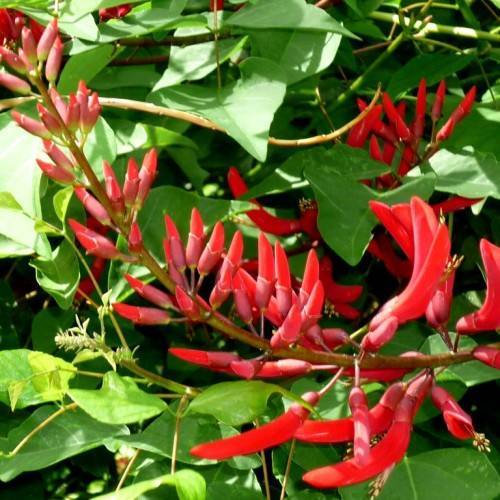
coral tree
Erythrina bidwillii
Cycle:
Perennial
Watering:
Frequent
Hardiness Zone:
8 - 10
Flowers:
Flowers
Sun:
full sun
Fruits:
Fruits Ready In Summer
Edible:
Yes
Leaf:
Yes
Growth Rate:
Low
Maintenance:
Low
Drought Tolerant:
Yes
Salt Tolerant:
Yes
Thorny:
Yes
Tropical:
Yes
Care Level:
High
watering
Coral tree (Erythrina bidwillii) should be watered 2 to 3 times a week, depending on the climate and temperature in its environment. During hotter, dryer climates, increase watering to every other day while ensuring the soil is not overly saturated with water. During the winter months, it is important to reduce water slightly, to twice a week. To ensure the optimal growth and health of your coral tree, always make sure the top several inches of soil remain mostly dry before each watering.
sunlight
Coral tree (Erythrina bidwillii) requires full sun to grow and thrive. It should be kept in a location that receives at least 6 hours of direct sunlight each day. In the winter months, when sunlight is at a minimum, coral tree (Erythrina bidwillii) should at least receive 4-6 hours of direct sunlight per day. This will ensure the plant continues to grow and thrive even in the coldest conditions, but full sun in the summer will help develop more flowers.
pruning
Coral tree (Erythrina bidwillii) is a moderately fast-growing, medium-sized ornamental tree that typically does best with pruning. When it comes to pruning, it’s best to wait until late winter to early spring, when the plant is still dormant. During this period, you can remove any damaged branches or weak shoots that appear to be growing in an awkward, unbalanced way. You can also prune the tree to give it an overall shape or control its size. Generally, you should never remove more than 1-third of the total branches in any 1 pruning session. For best results, focus on removing only the most necessary and/or dead branches.
